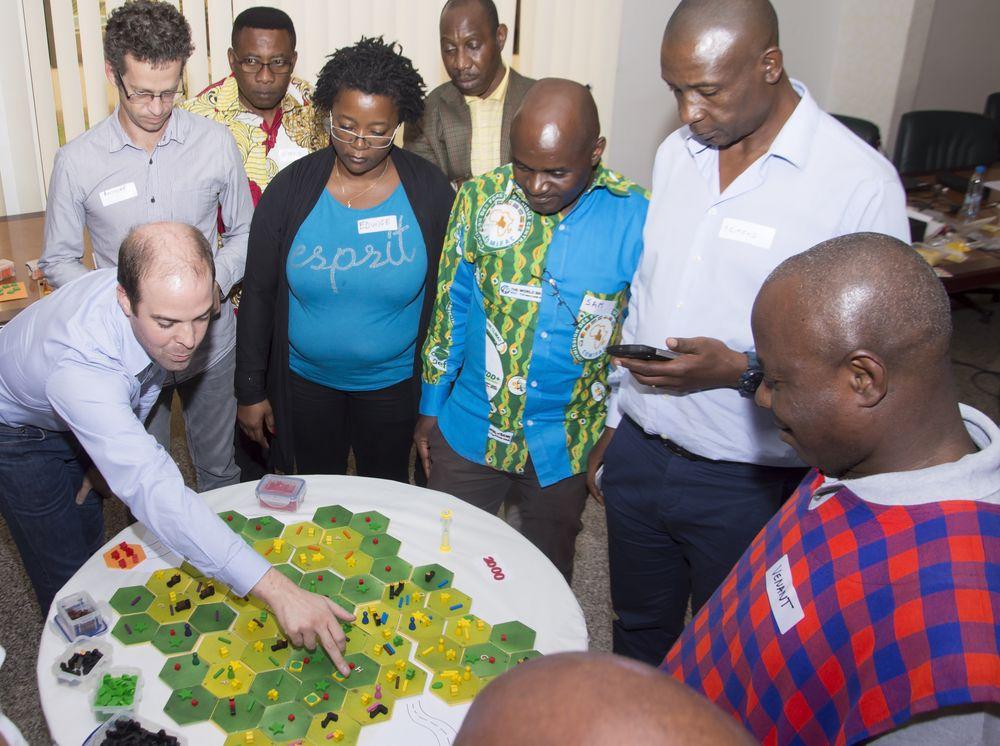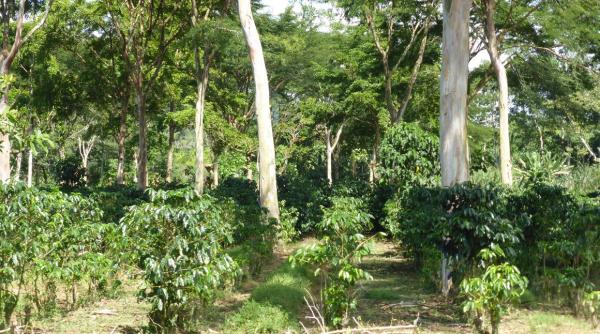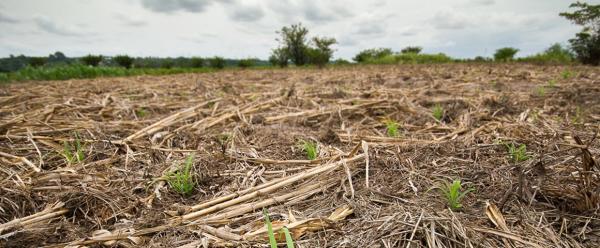Call to action 16 April 2025
- Home
- Press area
- Press releases
- using games to fight deforestation
Why are current policies to combat deforestation doomed to failure?

In Brazzaville, it was a game that served to unlock talks on indicators and rules for the management of Intact Forest Landscapes in Forest Stewardship Council-certified concessions © C. Garcia, CIRAD
The call comes from a collective of 23 researchers, consultants and NGO actors from 13 different countries in Europe and North America, and this paper marks their first but not last collaboration. Together, they argue that deforestation and reforestation policies need to reconsider how they take into account human decisions, and not their ambitions. They identify the way humans take decisions to be a blind spot in policies and discourses over forest and landscape change. They put forward the need to make explicit the way decision makers think to negotiate forest management and the tangle of different stakeholders and interests that entails.
One way to do that according to the authors is to use strategy games, a method already proven successful in several negotiation arenas at local and regional scales. They say such games help players overcome bias and resolve deadlocks. The authors hope negotiators at major international talks - such as the COP15 of the Convention on Biological Diversity (2021, Kunming, China) and the COP26 of the United Nations Climate Change Conference (2021, Glasgow, UK) - will also be willing to play. “We have been talking for a quarter of a century, and we are nowhere close to reversing the trends. Maybe it’s time to try something new”, says Garcia, an ecologist at CIRAD and lead author of the paper.
A track record of failure
The paper highlights that, despite the plethora of national, international, public and corporate initiatives in recent years, targets are being missed and deforestation trends are continuing and even increasing if degradation is taken into account. In its recent report “The state of the world’s forests” , FAO estimates that an average of 11 million ha of forests were lost annually over the decade, which is less than the 15 million ha lost per year during the previous decade. “But this estimate does not take into account natural damage and forest fires ”, Claude Garcia points out. In 2015 alone, according to the same report, forest fires affected 4% of the world's tropical forests, mainly in Africa and Latin America*. “And if in Australia the causes of fires are mainly natural, this is not the case in Brazil, Colombia or Indonesia”.
In September 2019, for example, major companies Nestlé and Procter & Gamble announced they would fail to meet their self-imposed targets for zero deforestation. Ten percent of the countries involved in the Bonn Challenge have set themselves the impossible target of restoring an area of land that considerably exceeds what is available for restoration within their borders**. More recently, during the Covid-19 crisis, there has been a surge of deforestation in Brazil. In all these cases, the driving factor is the way humans make decisions.
“Successes here and there do not register at the global scale, and at best they tell a story of battles won but of a losing war,” the team wrote in their paper entitled The global forest transition as a human affair .
Landscapes of values and norms
To even begin to address why policies are failing, the collective says we need to gain a better understanding of the human agency involved in forest transitions*** and the “mental models” of people, i.e. how individuals see the world and how they make decisions. To date, this part of the puzzle has been largely neglected and this may explain why negotiations end in stalemates and commitments and policies prove ineffective.
Playing the Anthropocene game
Through the games, the participants can become aware of their outlooks and decision-making processes, which gives way to reflection and identification of compatible goals. The games allow participants, playing their own role or the role of someone else, to live through the experience of decision-making and its hypothetical consequences, making lessons learnt more meaningful. The method proved particularly successful back in 2018 when, after two years of deadlock, one such game helped participants reach an agreement on intact forest landscape management in the Congo Basin (see the box).
“Rather than blindly putting our trust in artificial intelligence to identify what decisions we should make, we put our trust in and wager on collective intelligence” , Garcia says of the markedly low-tech method. “It’s a very Anthropocentric approach,” concedes Garcia. “But after all, we are living in the Anthropocene.”
Reference
Garcia et al. (2020) The global forest transition as a human affair . One Earth.
* FAO. 2020. Global Forest Resources Assessment 2020 – Key findings . Rome.
** Bastin, Jean-Francois, et al. The global tree restoration potential . Science 365.6448 (2019): 76-79.
*** The term ‘forest transitions’ refers to a regional-scale shift from a shrinking to an expanding forest area.



























